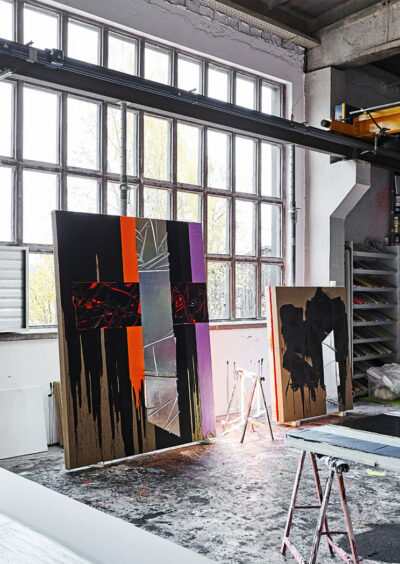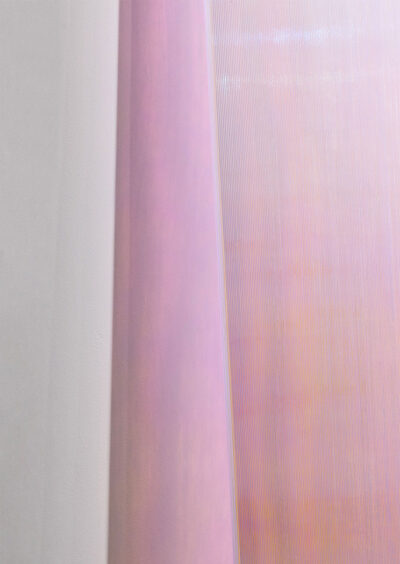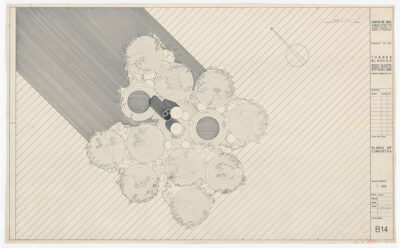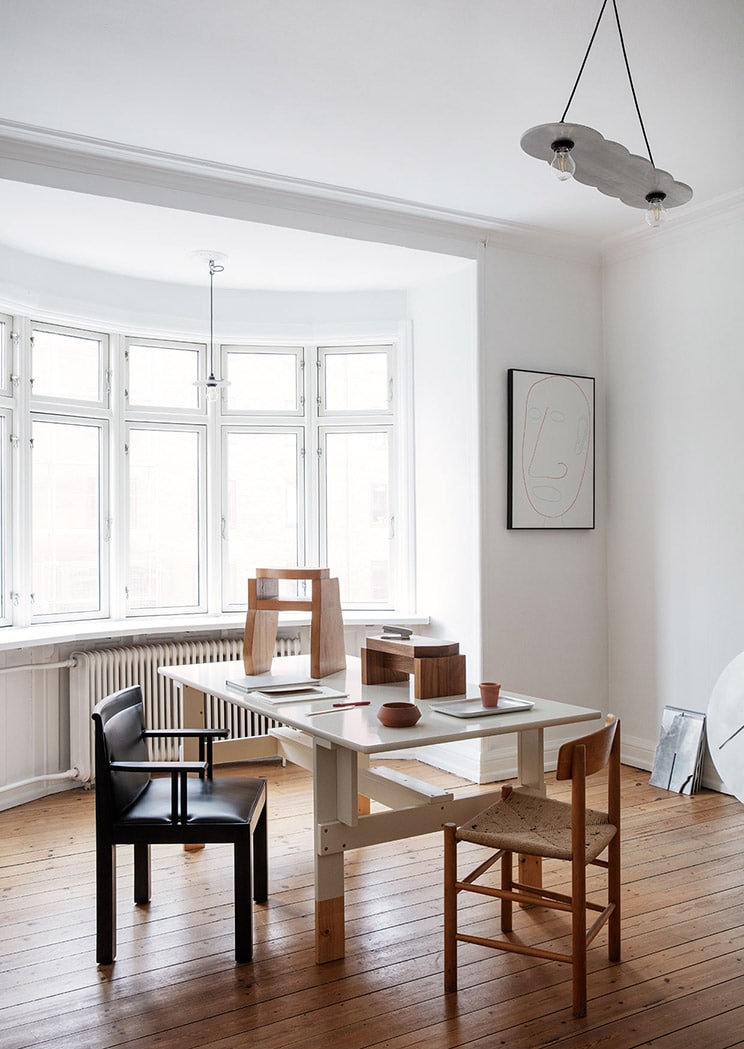
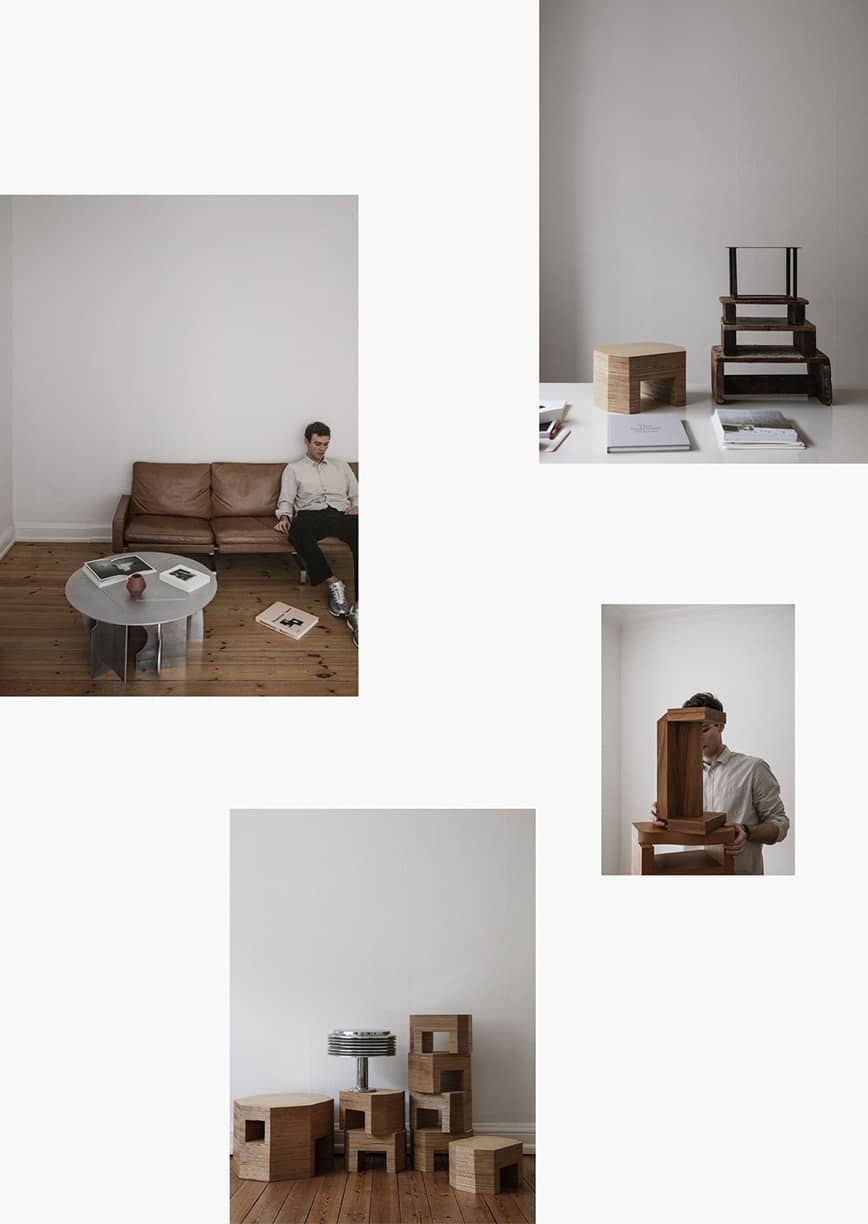
STUDIO VISIT — CHRISTIAN VENNERSTRØM JENSEN OF BAHRAINI-DANISH
Design
Ideas rather than looks lie at the heart of Christian Vennerstrøm Jensen’s design practice. As one of the trio behind the studio, Bahraini-Danish, the architect starts his explorations from a place of cultural duality. “When I moved to Bahrain in 2015 to work for Studio Anne Holtrop, I encountered an architecture that was very different from what I could understand. I found it beautiful, although none of the rules I had been taught at the architect school in Aarhus in Denmark applied to this place.” This sense of alienation led to his setting up the studio with his local partners, playing off their cultural differences and working with artisans to create something new. Their first piece, the aluminium Coffee Table #01 was sketched over coffee and they now have a stool in the V&A Museum in London and a table in the residence of the Danish prime minister. The low, chunky Tiny Furniture stools dotted around the 31-year-old’s combined home and studio in Copenhagen demonstrate the cultural fusion with influences from Bahrain workspaces and Danish milking stools. They also embody their conceptual approach of questioning how to focus on mass and use a single material such as wood or metal.
“There is nothing better than a good object in a good space. I believe that’s why I became an architect. I wanted to know how it feels to create rather than consume that experience.”
This story is featured in Ark Journal VOL III.
WORDS KARIN GRÅBÆK HELLEDIE
PHOTOGRAPHY HEIDI LERKENFELDT
styling PERNILLE VEST
RE RUIN — HOME BERLIN
Building their home amid the ruins of an abandoned GDR property in east Berlin gave artist Anselm Reyle and architect Tanja Lincke the chance to rediscover the beauty of creative freedom.
MAKING THE INVISIBLE VISIBLE – ANN VERONICA JANSSENS
Growing up in Kinshasa, Ann Veronica Janssens would often watch the sunset and sunrise, specifically the deep shades of violets, yellows, pinks and reds that swept across the sky, over the nearby mountains.
FRANCISCO JAVIER SÁENZ DE OIZA’S TORRES BLANCAS
Navarra-born, Francisco Javier Sáenz De Oiza is regarded as one of the most prolific Spanish architects of the twentieth century. In the 1950s, following an unimaginative return to the neo-classical style under Generalissimo Franco, Oiza, with peers Francisco de Asis Cabrero, and Miguel Fisac, began integrating international architectural vernaculars in their search for a Spanish Modernism.

STUDIO VISIT — CHRISTIAN VENNERSTRØM JENSEN OF BAHRAINI-DANISH
Design
Design
Ideas rather than looks lie at the heart of Christian Vennerstrøm Jensen’s design practice. As one of the trio behind the studio, Bahraini-Danish, the architect starts his explorations from a place of cultural duality. “When I moved to Bahrain in 2015 to work for Studio Anne Holtrop, I encountered an architecture that was very different from what I could understand. I found it beautiful, although none of the rules I had been taught at the architect school in Aarhus in Denmark applied to this place.” This sense of alienation led to his setting up the studio with his local partners, playing off their cultural differences and working with artisans to create something new. Their first piece, the aluminium Coffee Table #01 was sketched over coffee and they now have a stool in the V&A Museum in London and a table in the residence of the Danish prime minister. The low, chunky Tiny Furniture stools dotted around the 31-year-old’s combined home and studio in Copenhagen demonstrate the cultural fusion with influences from Bahrain workspaces and Danish milking stools. They also embody their conceptual approach of questioning how to focus on mass and use a single material such as wood or metal.
“There is nothing better than a good object in a good space. I believe that’s why I became an architect. I wanted to know how it feels to create rather than consume that experience.”
This story is featured in Ark Journal VOL III.
WORDS KARIN GRÅBÆK HELLEDIE
PHOTOGRAPHY HEIDI LERKENFELDT
styling PERNILLE VEST

